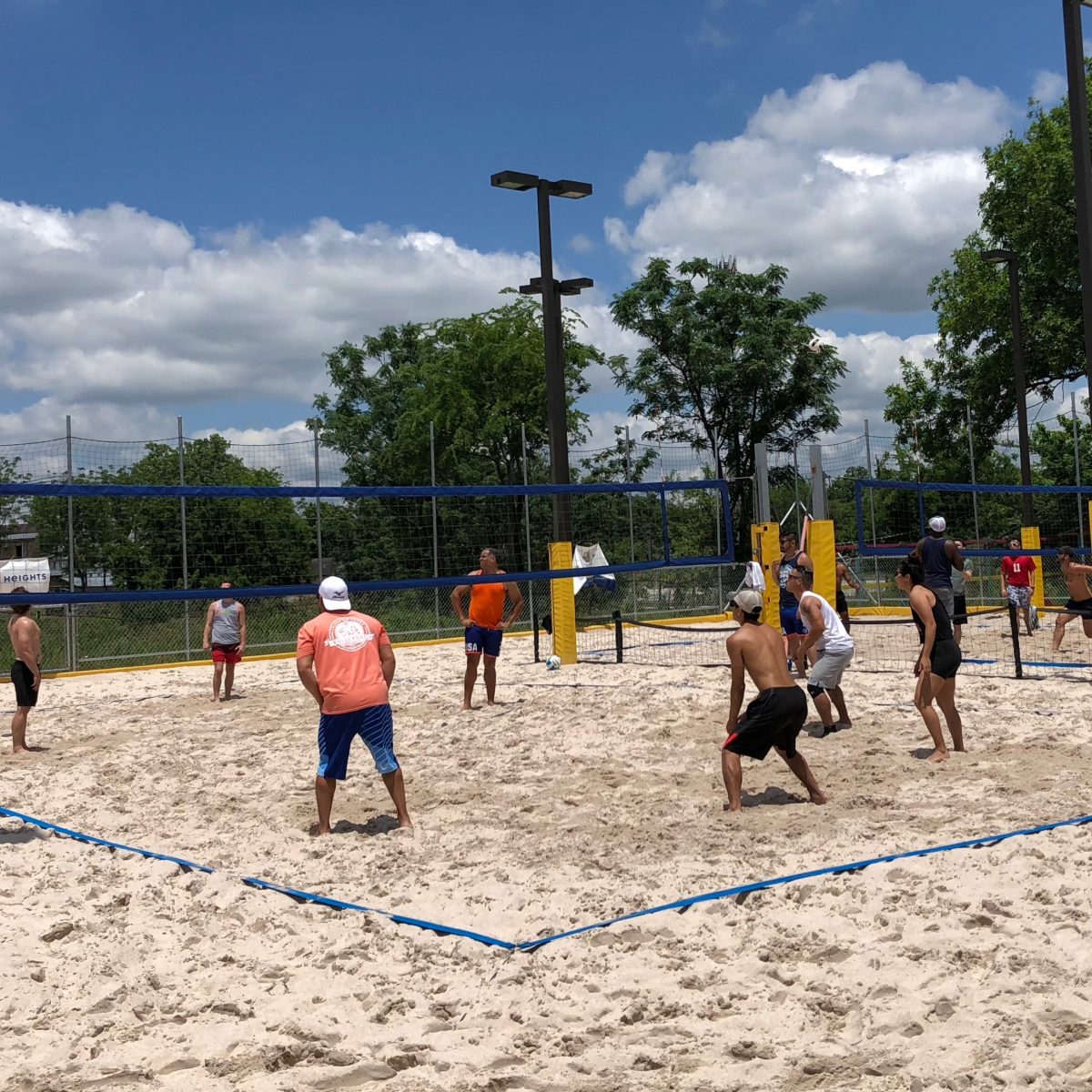Fundamentals of Beach Volleyball
Done in cooperation with Sideout Volleybar.

dr.ricky online

Done in cooperation with Sideout Volleybar.
Hosted by Sideout Volleybar. Register in person at the bar.
Learn the sport from the *ground up*. No prior knowledge of the game is expected, beginners are welcome.
Intended for adults 18 and older. No juniors please, but seniors are encouraged.
The focus is on beach volleyball doubles and quads (4s). Participants should be prepared for a physical workout, but we will adjust the program to fit almost all fitness levels. The program is 1.5-2 hrs long, and class size is capped at 8.

The adoption of rally point scoring fundamentally changed the strategy in beach volleyball. The original mintonette borrowed scoring from baseball with nine innings — but few people even remember that. Some, though, can probably remember the sideout scoring system, where a team must have served the ball to earn a point. Rallies won by the receiving team didn’t change the score – resulting in unpredictably long games. In the two man version of beach volleyball, the game evolved into a marathon, where grinding down your opponents by sheer endurance is a viable strategy.
The modern rally point scoring system awards a point for the team winning the rally, regardless of who serves the ball. This small change ensures that with each rally the game proceeds towards the end point, which results in a more stable prediction of match durations. But what has remained unchanged is the need to earn the two point advantage to end the set at 21.
The team receiving the serve usually has the first chance to attack and terminate the rally, earning the first point (“siding out”). Players settle into practicing this scenario often: it’s fairly easy to reproduce in isolation, can be made predictable, and for the attacking player, a feeling of strength crushing the ball against an imagined defenseless opponent. The components can be simplified into modular training parts: passing the ball to a set location on the court, setting with recognizable biomechanics, and attention paid to the velocity of the attack. But assuming that a team is proficient at siding out, the next point, they would have gained the responsibility of serving the ball – and handed the advantage of first attack to the other team.
The equalizing nature of this rule means that the way to win is to earn your points without needing that service receive advantage at least twice. Not counting unforced errors, the three primary ways to earning the point advantage are:
A stuff block (and its variants)
A defensive conversion
Of these three, the last is most common, and requires effective transition setting and smarter attacking. In general, practice should be weighted to focus on these play scenarios, but these are greater challenges for both coach and athlete. These do not easily break down into reproducible modules, nor does effectiveness arise exclusively from homogenous biomechanics. But learning to adapt to more chaotic conditions makes for a more effective team.

The news about the FIVB Katara Beach cup in Doha that has people agog is that Jake Gibb and Taylor Crabb managed to defeat Phil Dalhausser and Nick Lucena in the second round match of Pool A – which earned them a first round bye in the elimination bracket, but doesn’t really eliminate Phil and Nick. In other notable developments, this is the first appearance of the new team of Adrian Carambula and Gabriele Pasquale playing for Italy, although they didn’t make it out of the qualifier. Other interesting participants in the qualifier are Indonesia and Scotland. American teams in general did well, all of them except for Phil and Nick earning first round byes — yet only Phil and Nick survive to make it to the semi finals.


New season, new team for Tuesday night at Third Coast. Here is the shirt design, comments are welcome. You can order the Tanktop version There are also regular T-shirt versions.

Dust off the ball before tossing it to someone. This simple act should be automatic. It avoids a great deal of distress.

Wilson, the sporting goods company, posted an ad on Instagram declaring
DURING A MATCH, VOLLEYBALL PLAYERS ON AVERAGE JUMP 300 TIMES.
The ad is accompanied by an illustration that depicts female beach volleyball players, which implies that this number applies to beach volleyball specifically. This number appears unusually high, so I inquired as to the source of the number.
https://instagram.com/p/BedVH6rAMp0/
Michelle Magsamen checked with the marketing department of Wilson, and provided three links that are the alleged source of this figure:
A beach ’baller jumps on average 300 times per game.
In this article, the author Jonno Turner reports an average of 300 jumps per game – not per match as reported by the advertisement.
Most volleyball players jump about 300 times a match.
In all likelihood, this last link is the main source of this number, and was continually misinterpreted by the other writers to fit their current narratives. I tracked 10-facts-about.com to a company in Sweden called NanOak Technologies, appears to be a “content farm” – they produce these sites and brands like 10-facts-about and Wisefacts – ostensibly pouring out random interesting “facts” to attract page views, and therefore sell advertising. There is no verifiable vetting of this information, but they are cherrypicked to most likely to appeal to confirmation bias.
In effect, this is fake news – unvetted information that is twisted just to profit from the misinformation. Though Wilson may have citations, those sources are ultimately unreliable at best.
Is there real data on the number of times beach volleyball athletes jump on average in a match? Much more peer reviewed data studies the indoor game, but there are some data on beach volleyball.
Granted, these are for elite volleyball players playing in high stakes tournaments, but it’s still nowhere near the 300 jumps per match average per player. In fact, only if you account for the jumping of all players on both teams in beach volleyball can you come close to this average number.
Based on this research, the average number of jumps per player per match in beach volleyball seems to be between 40–80.